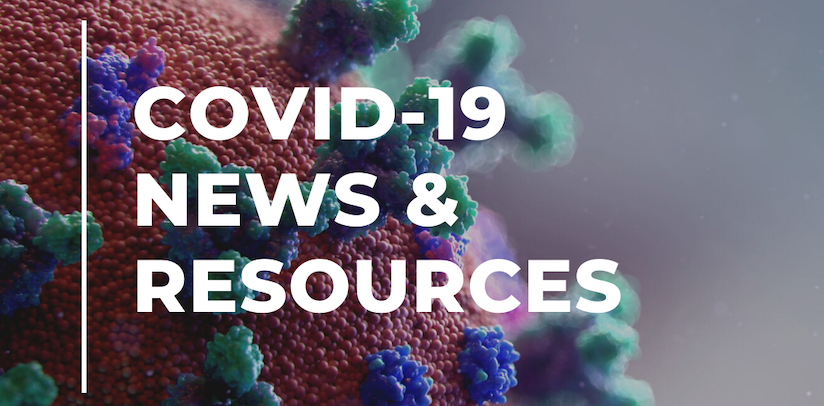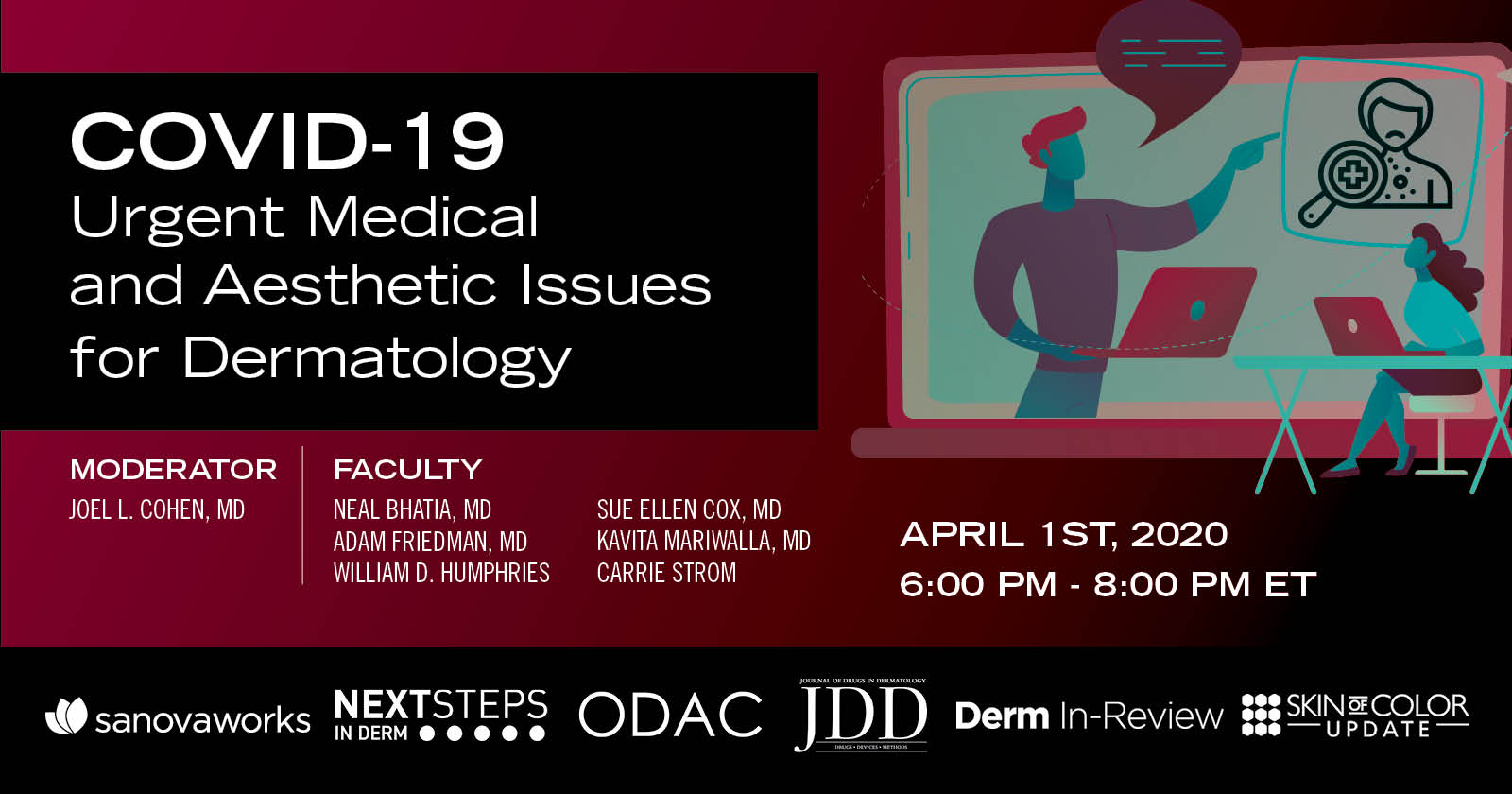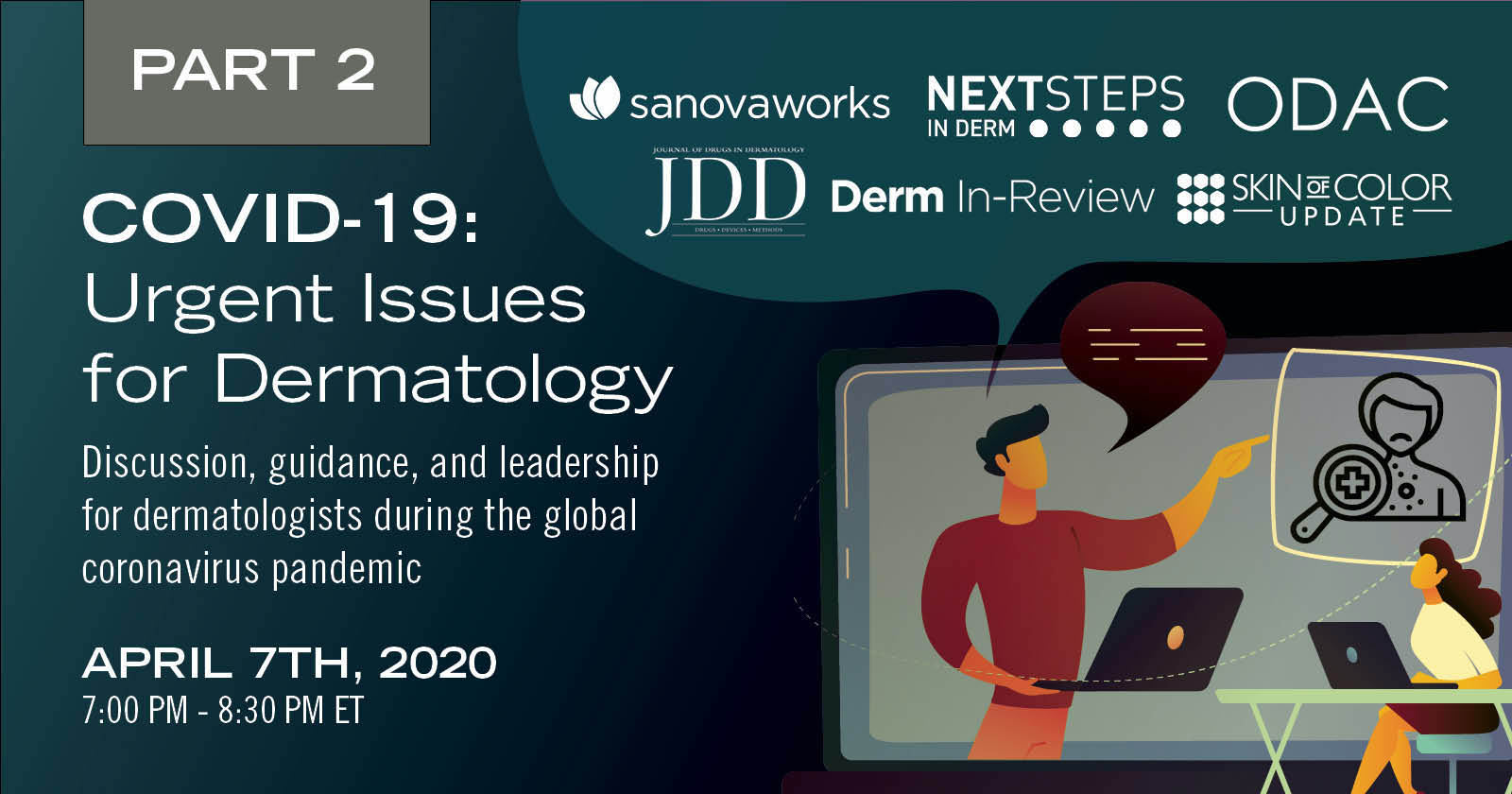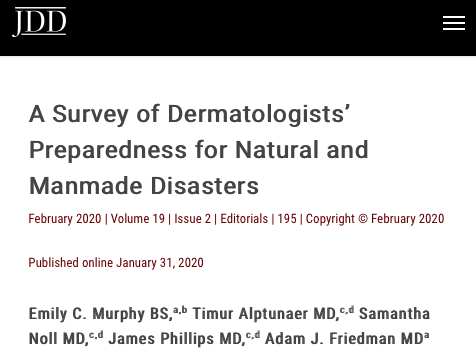
NEW YORK, (Apr. 9th, 2020) – Luciana Halliday Nofal, VP Marketing and Client Relations
In response to the needs of the SanovaWorks community, our brands have developed COVID-19 resources.

On April, 1, 2020, the Journal of Drugs in Dermatology (JDD) and SanovaWorks brands launched Part I of the webinar series: COVID-19: Urgent Dermatology and Aesthetic Issues for Dermatology.
Over the course of the 2 hours, Joel L. Cohen, MD and 6 different thought leaders joined the COVID-19 conversation, discussing the pressing questions that are on the minds of many dermatologists and providers in the country. The initial broadcast attracted 1,900 registrants and nearly 800 attendees comprised of physicians, residents, fellows, nurse practitioners and physician assistants. Attendees were interested and engaged throughout the entire 2 hours with a 76% average attentiveness and 72% average interest rating.
The on-demand broadcast has attracted over 500 registrants as of April 9th and is available on JDDonline.com.

On April 7, 2020, Part II of the webinar series was broadcasted: COVID-19: Your Questions Answered. Dermatology experts and thought leaders examined the legal and financial concerns of dermatology providers during the global coronavirus pandemic. Experts discussed furlough vs. layoffs; mortgage and rent relief programs; the CARES Act; the pros and cons of leveraging NPs or PAs for teledermatology and more. Then, hear questions answered by our panel of experts; discussed practical tips you can use in your practice right now; and how to move forward with patient care. Part II attracted 1,300 registrants with nearly 700 attendees. Attendees were engaged and interested throughout with an 82% attentiveness average and 75+% interest rating.
The on-demand broadcast of Part II will be available on April 11, 2020 on JDDonline.com.
Next Steps in Dermatology, a resource for young dermatologists and residents, recently launched a COVID-19 News and Resource Center. Next Steps in Derm COVID-19 News & Resources Center offers a curated selection of relevant news and resources from truthworthy sources to help physicians navigate the COVID-19 pandemic.
Resources include:
- COVID-19 Webinars
- Free CME
- COVID-19 Related Podcast Episodes
- COVID-19 PubMed Articles in JAAD, JDD, etc.
- Recommendations from AAD, AMA, etc.
- Guidance from HIPAA, Medicare, and on Telehealth


Recent Comments